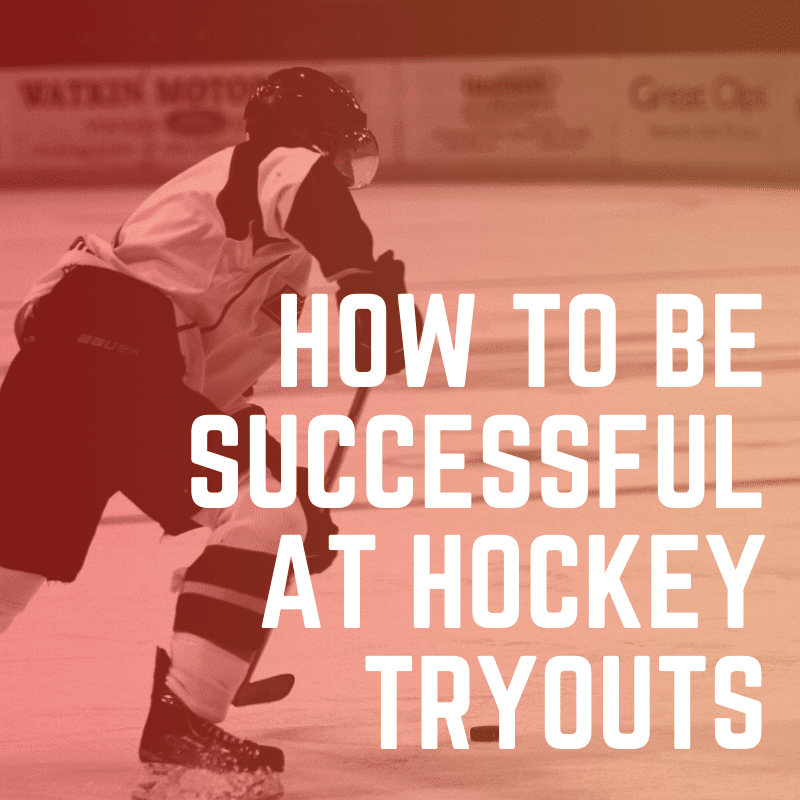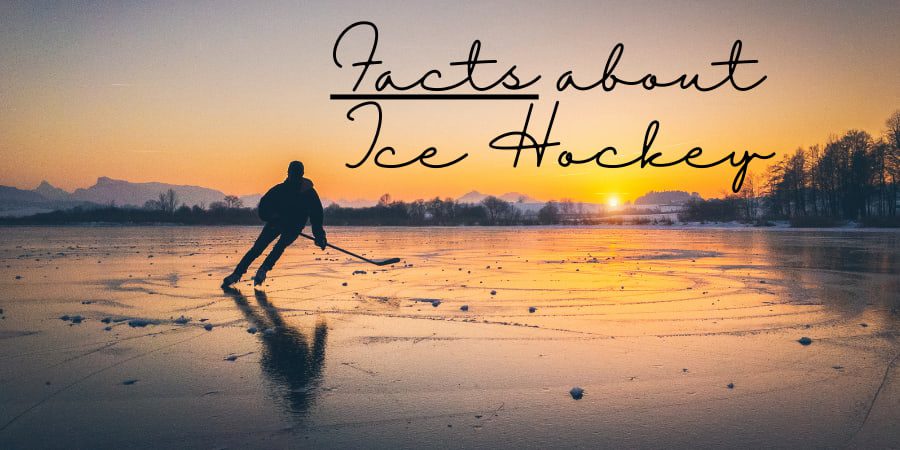How to Be Successful at Hockey Tryouts
It is key to stand out to the coaches or evaluators to make the team you are aiming for. These tips will boost your chances on how to be successful and ace the Hockey Tryouts
Whether you’re a coach or a player, there’s something here for you. We will show you how to foster a winning and welcoming vibe and attract the best talent. And players, I’ll help you wow coaches and stand out.
Setting the Tone for Your Hockey Tryouts
We cannot stress the need for good preparation for tryouts. This includes tuning up skills and correcting what you wish to change. Prepare both mentally and physically.
Highlighting the values of hard work, respect, and teamwork is crucial. Players, you must know to put in effort on and off the ice, respect others who compete against you, and work as a team during drills and games. This is the base for a strong tryout mental mindset and builds a supportive environment.
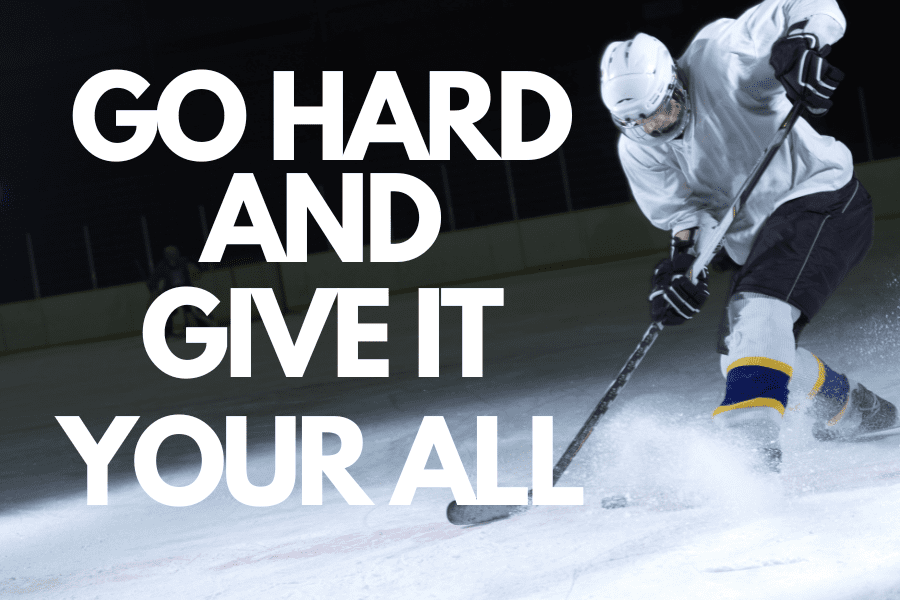
Players, I would love to say you might get feedback and encouragement during tryouts. But, unless we are talking 10U….forget about it.
Most coaches want to see what you or your kid has instinctively, physically, and psychologically to succeed within them. The player needs to show it to the coach at this juncture, not the other way around.
A positive attitude is vital for the right tryout tone. Keep your players to be positive and excited. This helps them deal with nerves and perform well. I ask them to focus on enjoying the process and their hockey growth, no matter the outcome.
Through clear expectations, key values, feedback, and a positive attitude, parents and coaches can make tryouts competitive and rewarding for players.
What will be expected at Tryouts?
Age and skill level matter when planning a tryout. For younger players, it’s about mastering the basics like skating and passing.
But, for older ones, we turn up the challenge with advanced drills to test their hockey knowledge.
Coaches are watching how players skate, shoot, pass, and handle the puck. But, I also see how they play under pressure and their game awareness. These things show how they perform in real games.
The aim of a tryout is to gauge each player’s talent and effort. There are key steps to keep in mind while setting up your tryout:
- Get everyone warmed up with drills that ready them physically and mentally.
- Move to drills that pinpoint skating, shooting, passing, and puck control skills. Players watch your form, keep your head on a swivel, anticipate where the puck will go and make sure you are in the right spot.
- Mini-games or scrimmages to see how players think on their feet. This is where the coaches will gauge your kid’s Hockey IQ, his or her ability to go hard and strong and separate themselves from the others.
- Go fast, but be on point, Go harder than everyone else!
- Be a positive vibe on the bench. Boost teamwork that focuses on working together.
- Be flexible when coaches may ask you to try a different position. Be flexible and quick to adjust.
These methods will help you host a tryout that truly assesses player skills and potential.
“Good structure in a hockey tryout ensures all players get a fair shot to impress. It helps coaches see their real abilities.”- Coach Mark Johnson
5 Hockey Drills to Prepare for the Hockey Tryouts
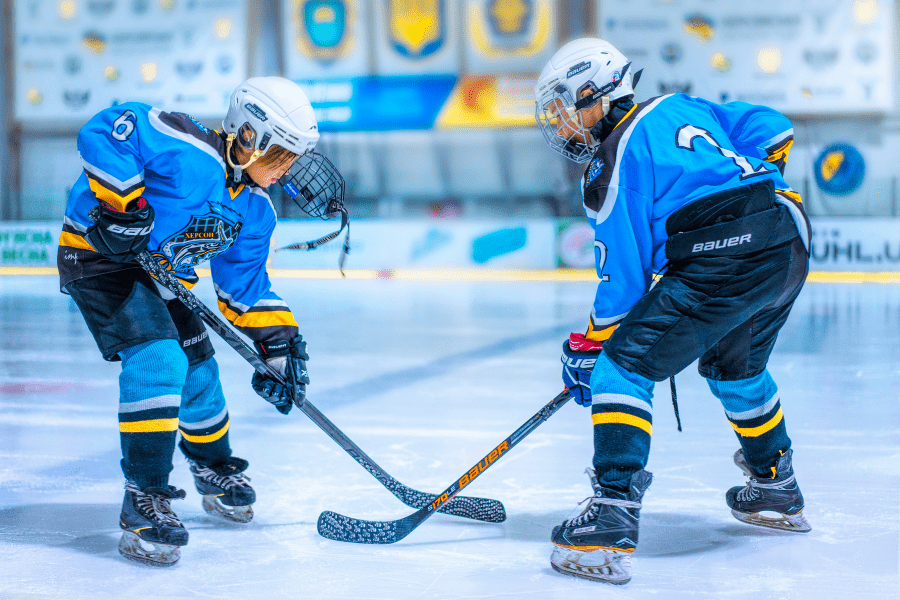
Hockey tryouts need a mix of good drills. This helps coaches see the players’ skills and what they can do. There are five drills that are great for tryouts.
1. Skating Drills for Speed and Agility
Skating is key in hockey. Coaches look to see how fast and agile players are. They use drills like slalom skating to see who can move quickly and with skill.
***Look for all and any Pre or Prep Skates***
Go to various pre-skates – not just the ones at your rink where you are trying out. Utilize and access as much Ice time as possible to work on that speed and agility.
2. Shooting Drills for Accuracy and Power
Shooting accurately and powerfully is vital.
Players do drills for wrist shots, snap shots, and slap shots. This lets coaches check their aim, speed, and hitting the target.
*** Consider working with another more senior player or even hiring a Hockey Trainer. There are private and group training sessions.
The best thing about hiring a Hockey Trainer is they not only work on the physical aspects of the game, but I have also seen this increase every player’s confidence level. It is the close interaction and coaching where really great relationships are built.
3. Passing Drills for Precision
Passing well shows how good a player is at helping their team. Players practice passing in different ways to show their skills. Hit the mark.
4. Small-Area Games to Evaluate Game Sense and Decision-Making
Small games look at how smart and quick players are on the ice. They play in small groups and need to work well together. Coaches want to see who can make a play happen and who has follow-through.
*** Get your friends together or make friends and attend Sticks and Pucks or Pick up Hockey Games to practice game sense and decision-making. ***
5. Endurance and Conditioning Drills
Hockey is tough, so players need to stay in good shape. They do drills to check their endurance and how hard they work. Coaches pay attention to this, as it shows who’s really committed.
Drills for tryouts should match the players’ age and skill level. They need to be hard enough to test them but not too hard that they get discouraged. Using a mix of these drills, coaches can pick a team that’s got everything needed for success.
Evaluating the Player at Hockey Tryouts
Evaluating hockey tryout players needs a detailed and observant approach. Coaches look for certain skills, attitudes, and potential in players.
Coaches assess their technical skills, how they work, their attitude if they listen, and if they can lead.
Coaches want players who try their best always. This shows they’re serious about getting better and helping the team. A hard worker is usually a player who’s really dedicated.
“During tryouts, I observe how players interact with their teammates, respond to feedback, and handle pressure. These off-ice behaviors provide valuable insights into a player’s character and their ability to contribute positively to team dynamics.”
Leadership skills matter a lot too. Good leaders help the team do better and keep everyone positive. Coaches watch for vocal players, play fair, and like helping and cheering their teammates, fist-bumping, and celebrating others’ good practice. They show they can lead the team in a good way.
On top of how they play, how they act off the ice is also key for choosing players. Coaches say they watch how they interact, take feedback, and deal with stress. It gives them a glimpse of their true character and how they fit with the team.
Real Mental Prep for Tryouts
There are strategies coaches can use to help skill players perform well in tryouts. Let’s talk about a few of these tactics:
- Visualization: Players should imagine doing well in tryouts. This mental practice helps them feel positive and sure of their skills. Try this video: https://youtu.be/VWLwXYKfDp4?si=tNdGRc16vG0m38kG
- Positive Self-Talk: Teach your kid how to say positive things to themselves. This boosts their confidence. They should focus on what they’re good at and past wins. Try this video https://youtu.be/Sy07XjKp6XA?si=KOYSoTBOyeDq2Zmh
- Goal Setting: Setting achievable goals is also important. It helps players see their progress and feel more confident as they achieve these targets. Set goals they can attain!!
Discovering Players with Potential
In hockey tryouts, coaches look for skill and growth potential. They search for those with the drive to improve. Even if players lack certain skills, their sportsmanship and eagerness to learn are key.
- Background: A player’s past experiences can shape their future in hockey. Previous sports or activities might have developed skills useful in hockey. Lacrosse is always a cross-referenced sport with Ice Hockey. But, so is basketball and even soccer!
- Involvement in other sports: Playing different sports shows that a player is athletic and versatile.
- Dedication: A player’s commitment shows how much they love the game. It’s crucial for coaches to see their hard work and whether they’re willing to improve and they love athletics.
Coaches must weigh these points to spot potential players. Those who, with help and opportunity, could become valuable assets. By boosting their skills and confidence, they can stand out at tryouts and offer more to the team.
Recognizing Locker Room Players
Building a strong hockey team needs great team chemistry and friendship. Coaches look for “locker room players” who help keep the team close. These folks are key in keeping everyone’s spirits up, especially when things get tough.
At tryouts, I check for players who respect each other, both on and off the ice. This respect shines in how they talk, act, and support each other. They know that working together is vital and their impact on the team is huge.
These players always give their all, in practice and games. They set a great example and motivate the team with their effort and dedication.
How someone carries themselves is also telling. Locker room players show confidence and handle pressure well. Their positive influence helps the whole team stay on track, stay motivated, and keep cool in tough times.
Locker room players are the glue that holds the team together. Their positive character traits, respect for teammates, strong work ethic, and good body language contribute to the overall success of the team.
To really understand a player, Coaches how their parents act. A player’s family and support system can affect how they behave. Talking with team leaders gives me insights into how different players add to the team’s dynamic.
And don’t be fooled, they will check out your reputation.
“The decision-making process should be fair and impartial, ensuring that all players have an equal opportunity to showcase their abilities.” – Coach John Smith
Impressing Coaches at Tryouts
Players always aim to impress coaches during hockey tryouts. Valuable tips and strategies can help you stand out:
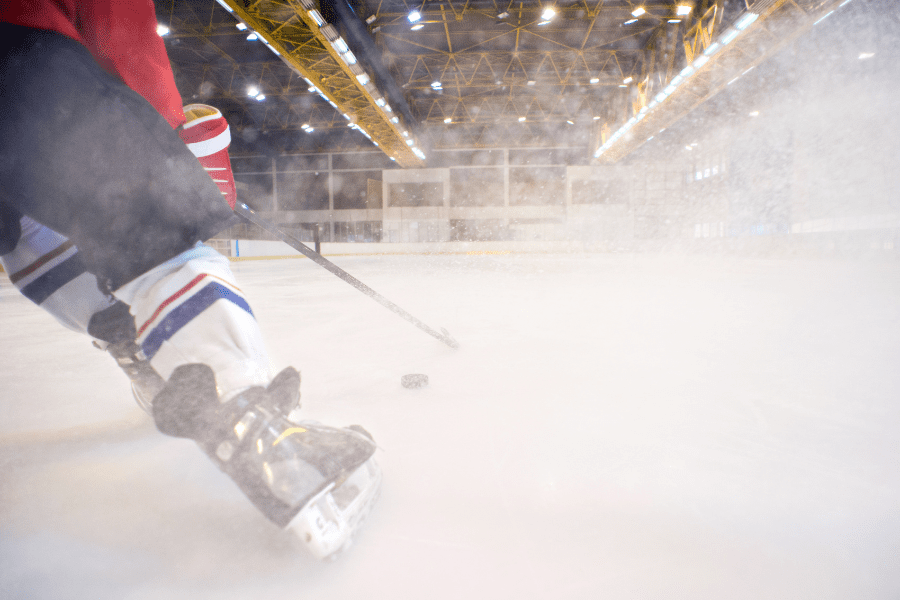
Showcasing Strong Skating Skills
Skating is key in hockey, and coaches look at your skills closely. Focus on being fast, agile, and using proper technique.
Work on your edges, crossovers, and sharp direction changes. The better you skate, the more you’ll grab the coaches’ eyes.
Displaying a Positive Attitude
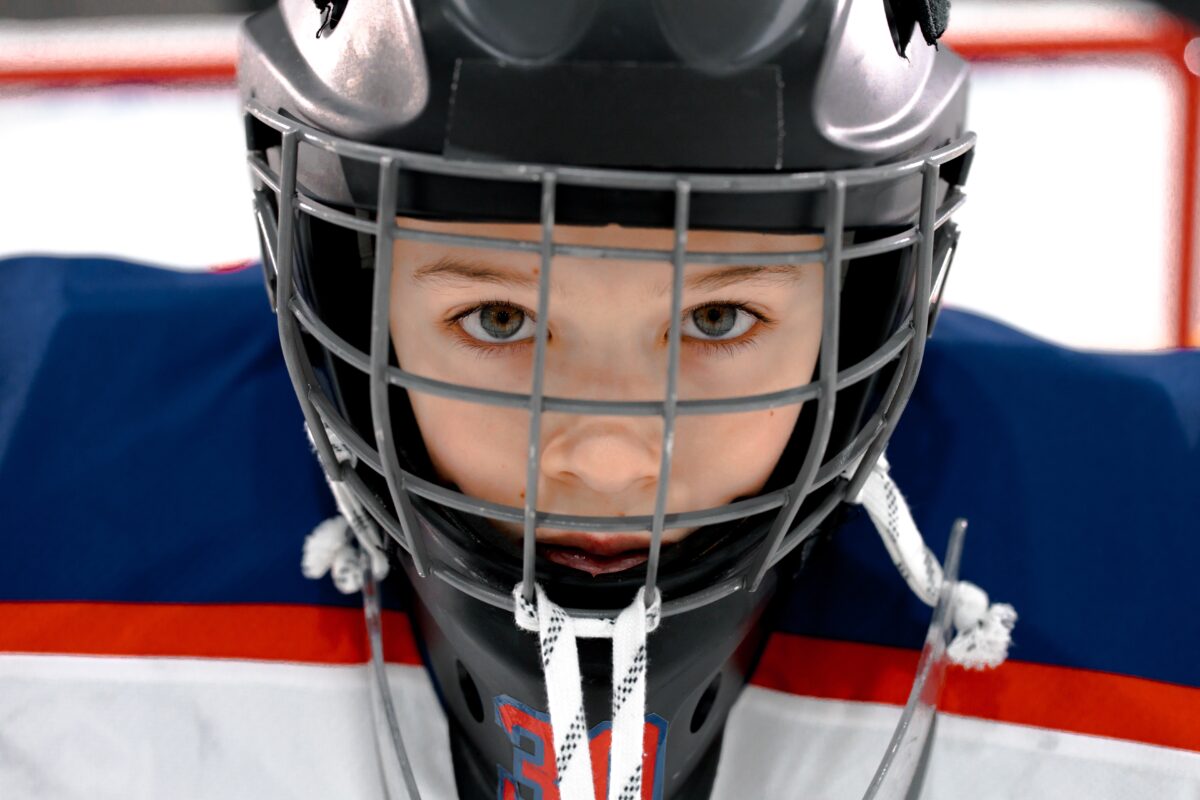
Your attitude matters both on and off the ice. Coaches like players with a positive team spirit. Be enthusiastic, tough, and eager to learn. Keeping up your morale through tough times is part of tryout fitness. A positive attitude doesn’t just please coaches; it lifts your whole team.
Being Committed and Coachable
Coaches like players who are serious about their sport and open to advice. Give your all in every activity.
Pay close attention, follow instructions, and work on the feedback you get. Also, show you can work well with the team and are eager to show correction and improvement.
Proper Equipment and Good Body Position
Come to tryouts with gear that fits well and works right. Make sure you’re wearing skates, a helmet, gloves, and pads in top shape.
Also, focus on your body position – keep your head up, stay low, and position yourself with good form, again you have to skate, shoot, and assist better than anyone else out there.
Be fast, make good decisions, and execute!
Active Engagement in Drills and Scrimmages
This is the time to be as close to the front of the line as when they run drills and skills. Do not talk to your friends in line. Ears are open to the coach or the drill at all times. You can chat on the bench or the locker room.
Use every moment on the ice to shine. Give your all in every drill and scrimmage. Show off your hockey knowledge and instinct.
If you are offensive – get the puck, and shoot when you can. Not that this is not of game of teamwork, but you do need to show your skill whenever you can when on the ice.
Conclusion
In this article, we have tried to provide you with valuable advice for both parents and players at hockey tryouts. These tips, like getting ready well, staying positive, and showing your best, really boost your chances. Hockey tryouts are more than just making the team. They’re also a chance to learn and grow.
Players need to focus on their skating, showing a good attitude, being willing to learn, and working hard. Parents can help by encouraging good habits and a positive attitude.
The tryout experience will matter, whether you end up making the team or not. It can really help in your personal growth and love for the game. Face the hurdles, learn from them, and get better. With the advice in this article, you can go into tryouts feeling ready. You’ll know you’ve prepared well to do your best.
Source Links
- https://www.icehockeysystems.com/blog/coaching-tips/how-run-successful-hockey-tryout
- https://www.omha.net/news_article/show/498788-8-things-coaches-look-for-when-selecting-their-team
- https://thensda.com/article/five-ways-to-impress-at-hockey-tryouts/

